EXPLORATION
January 9, 2019
Longyear Bits – Selecting the Right Bit in 5 Easy Steps
For core drilling, from drillers running a rig, to management in the office, people in the drilling and mining industry care about two things:
1. Getting individuals home safely
2. The amount of core in the box
When the right drill bit is in the right ground operated under the right conditions, more core ends up in the box at the end of a shift. There isn’t a perfect drill bit matrix or geometry that cuts every ground as quickly as possible. A Longyear bit may cut 17 inches per minute in Arizona, but cut just three inches per minute in Ontario.
Although diamond drill bit selection is often an afterthought, it’s just as important as drillers deciding how much water/mud to run or how fast to spin rods.
Although diamond drill bit selection is often an afterthought, it’s just as important as drillers deciding how much water/mud to run or how fast to spin rods.
Step 1: Identify the Main Objective
There are many factors to consider when selecting a drill bit, including the main objective of a project. As mentioned, the overarching objective is always more core in the box, but there are additional elements that need to be considered. For example, a rod trip takes significantly less time at 400 feet than a rod trip at 4,000 feet. While bit life is important, it’s less crucial at the top of a hole because that usually means sacrificing penetration rates.
In Australia, a site used two different bits at different depths. A Longyear Red Express bit was used to cut 60 centimeters per meter with a life of only 120 meters at the top of the hole. Once that bit was done they switched to a Longyear Yellow Stage 3, because rod tripping took too long. With this bit they only cut at 35 centimeters per minute but achieved a life of 300 meters per bit. Using a singular Longyear bit, this site put 6% more core in the box than they did with a competitor’s bit. However, using these two Longyear bits in tandem, they saw a 23% increase of core in the box over the competitor’s product. Sometimes, it’s more beneficial to cut faster even if it means tripping more.
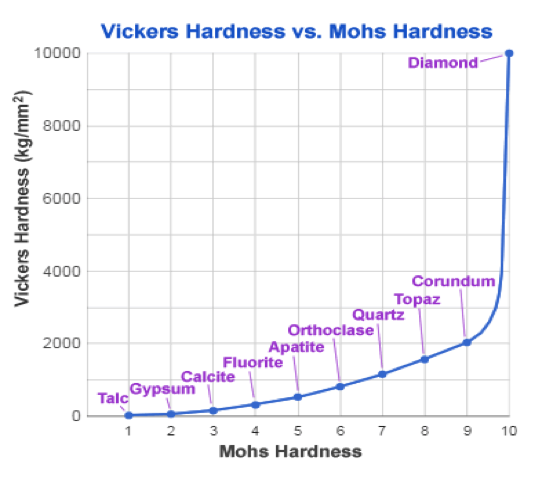
Step 2: Determine Ground Hardness
Once a driller decides whether the objective is cutting faster or tripping less often, next it’s important to establish how hard the ground is to cut. Contrary to popular belief, the ground drillers cut is (probably) not the hardest ground on earth. This is where the Mohs scale comes into play. The Mohs scale is an exponential scale from 1 to 10 to quantify mineral hardness. Minerals with a higher Mohs hardness will scratch anything with a lower Mohs hardness. For example, a mineral classified as a four will scratch a three but not a five.
All the bits offered on the market today are targeting a specific range of the Mohs scale for the best performance. To determine the Mohs hardness of the rock to be drilled, a Mohs hardness scratch test kit is needed. This kit is a series of picks made of different materials that, when used properly, can determine the Mohs hardness plus or minus 0.5.
The Boart Longyear scratch test kit has four scratchers with eight replaceable tips and a sharpening stone. If the numbered tip scratches the rock, the rock is softer than the number on the tip. If a seven scratches and a six doesn’t, you know you’re in 6.5 rock. You would then select the bit created for that rock.
Step 3: Select Color Bit
Once ground hardness is identified, Boart Longyear offers a Longyear Diamond Bits Hardness Rating & Comparison Chart to find a recommended bit for that ground. For example, Purple is meant for 1 - 4.5 rock, up to Red which is best for 7.5 – 9. Purple covers such a large range numerically because the Mohs scale is exponential (1 and 4.5 on the Mohs scale are closer together on “true” hardness than 7.5 and 9).
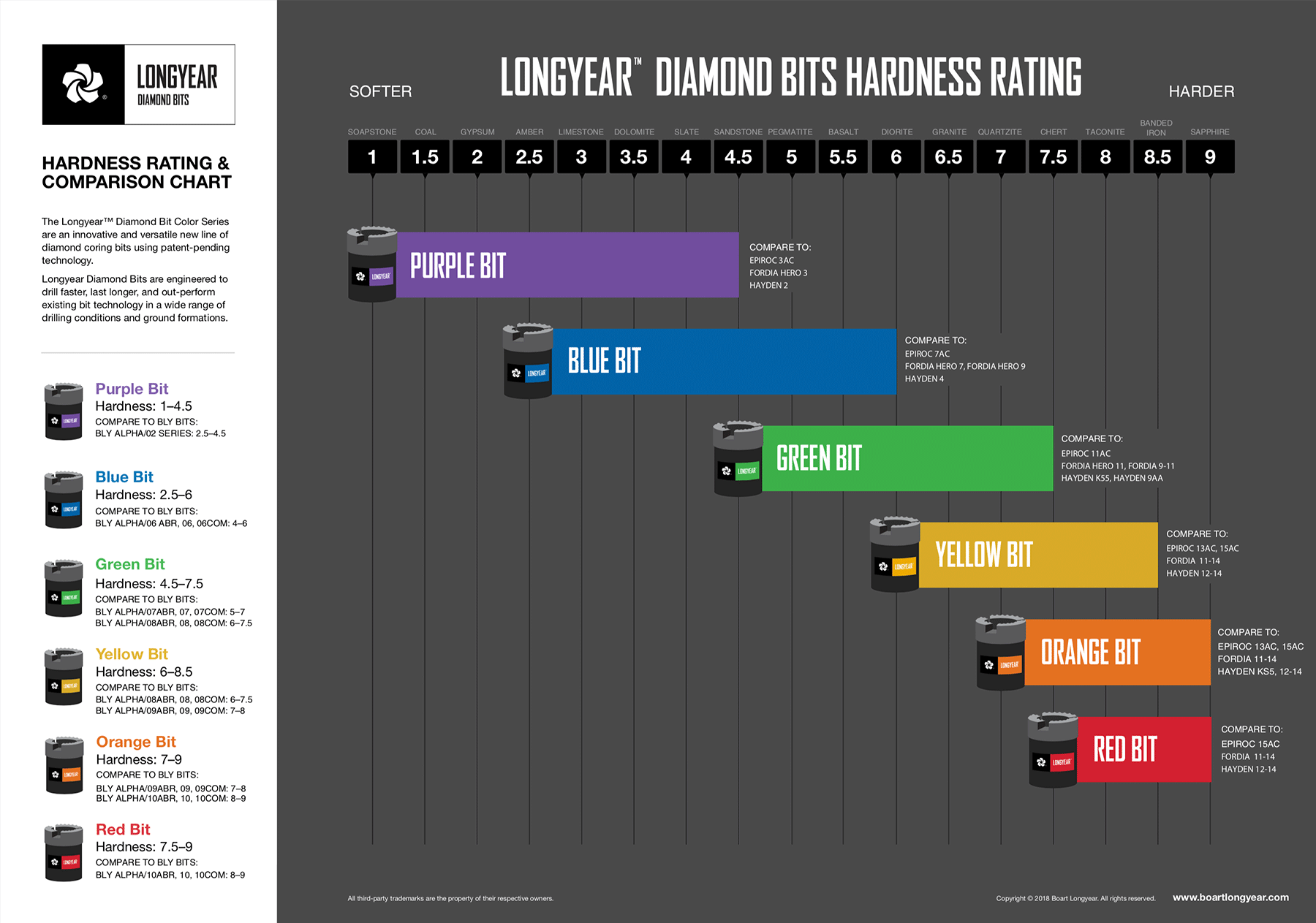
In the cross reference above, bit range overlaps, and the bars representing each drill bit are quite long. This is where the objectives of the site come into play. For example, if you are in a 6.5 rock, select a Green Bit or a Yellow Bit. Which one should you try first? It depends. If the site is cutting a lot of short holes and bit life isn’t a big concern, you would likely have the best luck with Yellow – it would penetrate faster than Green, but not have as long of life in 6.5 rock. On the flip side, if bit life is a concern because you’re drilling deep holes, you may prefer Green.
Another thing to consider for bit selection is geometry. While the Green bit is, in general, tougher than the Yellow, a Green bit with more open area and a Yellow with less open area will exhibit very similar cutting characteristics.
Step 4: Select the Correct Geometry
The geometries offered by Boart Longyear are all designed to cut a little differently. Within each color bar, the Express has the ability to cut harder rock than the Stage and the Stage will cut harder rock than the Tapered Waterway. This is a result of what is called, “open area”.
Open area is determined by finding the surface area of a disc with the same outside diameter and inside diameter as the drill bit, and subtracting the surface area of the drill bit with all the waterways cut in. What’s left is the area of the waterways, flutes, and rounds, and the percentage of this number compared to the area of the total disc is the open area. Express has an open area of 30%, Tapered Waterway has an open area of 25% and Stage has an open area of 20%.
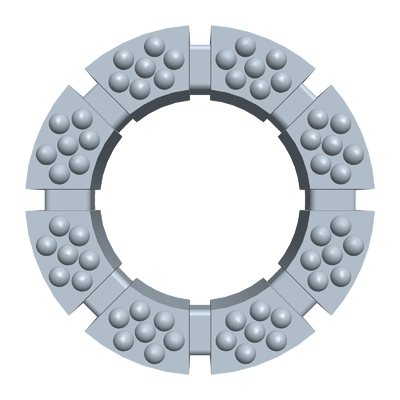
Standard Waterways
• Most common waterway style
• Longest life based on lowest open area 15%
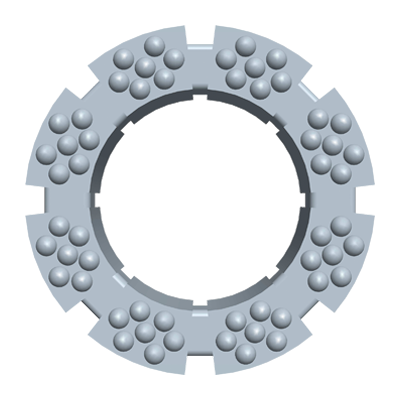
Tapered Waterways
• Pushes cuttings to the OD and reduces pressure across bit face
• Open area 25%
• Preferred
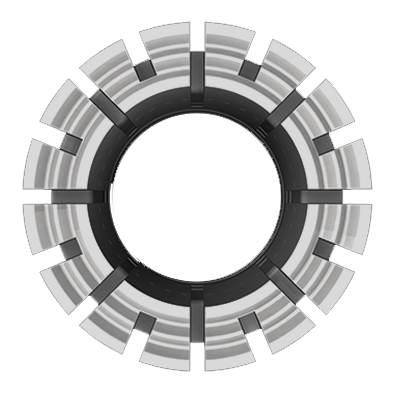
Express Waterways
• Faster penetration and/or lower weight
• Open area 30%
• Free-cutting formulas
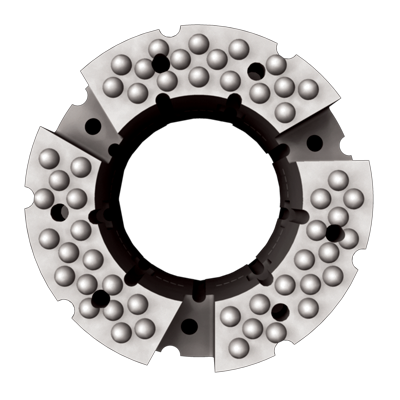
Stage/GT
• Wide waterways, more versatile
• Better flushing and penetration than standard waterways
• Open area 20% for Stage
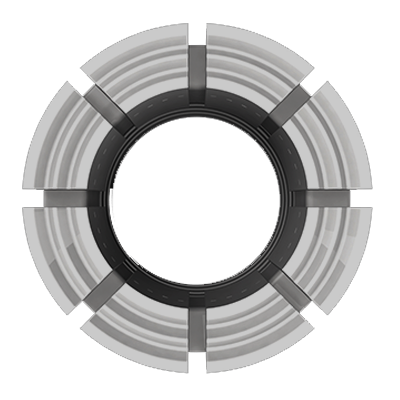
Deep ID Waterways
• Recommended for lost circulation applications; prevents the lifter case pulling into the bit and shutting off water
• Can be used instead of face discharge in triple-tube and piloted core lifter case
• Face Discharge preferred for core recovery. Open area based on waterway
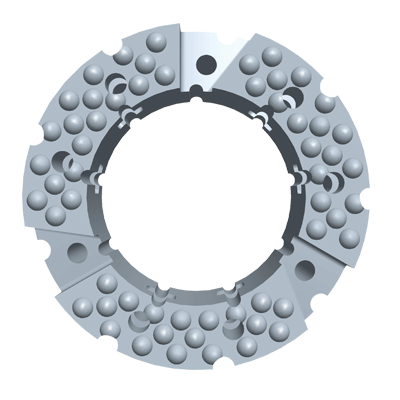
Face Discharge Waterways
• Reduces water pressure on the core and redirects fluid to the face of the bit (reduces washing core material), aiding in core recovery
• Required for piloted core lifter cases
• Open area based on waterway
If cutting at the top range of these bars, more open area will be needed, and the Express, for the middle and bottom ranges, will use Tapered Waterway or Stage, respectively.
The Longyear Yellow and the Longyear Green bits overlap substantially in the cross reference. This shows either the Longyear Yellow or the Longyear Green can cut Mohs 7 rock. To cut this Mohs 7 quickly, a Yellow Tapered Waterway bit will be needed. To cut it more slowly and optimize bit life, a Green Stage bit should be used. A Green Express, a Green Tapered Waterway and a Yellow Stage would land somewhere in-between.
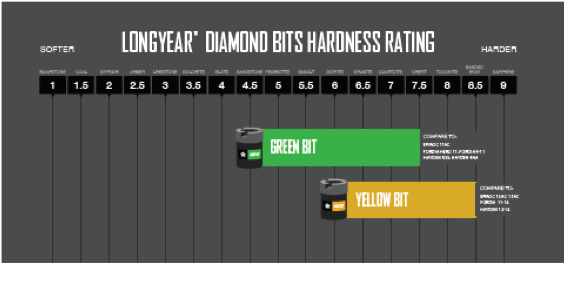
Once a bit has been selected for the rock type, crown height, and geometry, the last step is to collect data and test the chosen bit’s performance.
Step 5: Test the Selected Bit
Once the ideal bit has been identified – it needs to be tested, and the only way to make an informed decision during testing is to collect data.
Here are three mandatory data points to collect:
• Penetration rate on every run
• Mohs hardness every run
• Bit life of every bit
Once the data has been collected, this information can be used to either validate the choice initially made or adapt based on unaccounted circumstances. For example, if the Green Stage bit was selected but the penetration rate wasn’t as high as expected, then the Green Express and the Yellow Stage would be good bits to try next. The Yellow Stage may not provide the desired life, but the Green Express may be a perfect in-between. All this shows in the data and at the end of the day more core ends up in the box.
With a combination of knowledge, the right tools, and good planning, every shift can be optimized, and subsequently, put as much core in the box as possible.
Learn more about bit optimization and the productivity results from the field - New Longyear™ Bits Put 23% More Core in the Box
Ready to start testing? Contact your local Boart Longyear representative or visit My Drill Store.
DOWNLOAD PDF
Download the synopsis of this article as well as a sample testing log and start optimizing your bit performance today.




